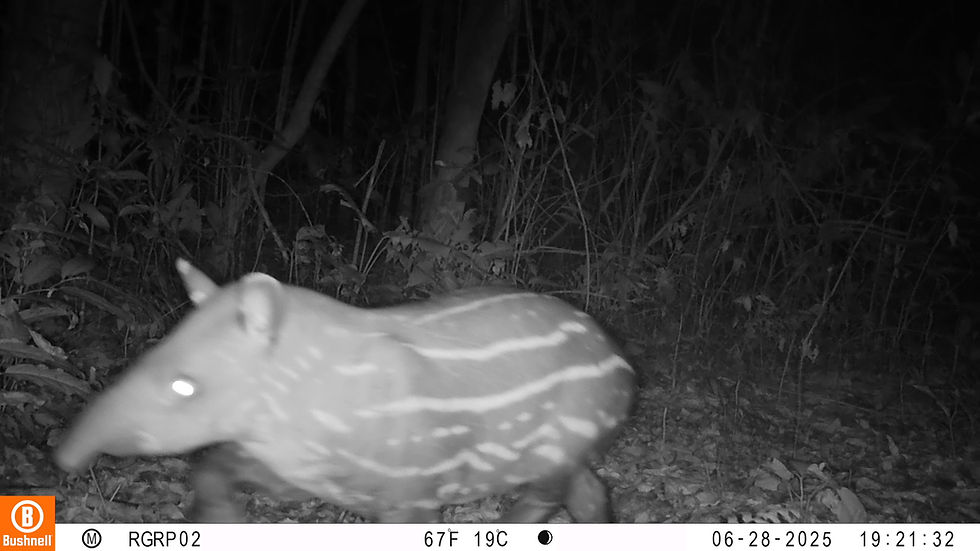Pair of Tapirs Reintroduced into the Guapiaçu Ecological Reserve
- Contato REGUA
- 5 days ago
- 2 min read
In early September 2025, the Guapiaçu Ecological Reserve (REGUA), located in Cachoeiras de Macacu, Rio de Janeiro, welcomed a new pair of lowland tapirs (Tapirus terrestris). The animals came from the Trijunção Wildlife Centre, a breeding and release facility for wild species in the state of Bahia, on the border with Minas Gerais and Goiás. The reintroduction was carried out by the Refauna Project, which has been leading efforts to restore tapir populations in the Atlantic Forest. The team captured images of the moment the animals were released — a symbolic milestone for the recovery of the species in Rio de Janeiro’s forests.

Tapirs had been extinct in the state for more than a century, mainly due to hunting and habitat loss. The last confirmed record of the species in Rio dates back to 1914, in Serra dos Órgãos National Park. The reintroduction programme began in 2017 under the leadership of Refauna, and since then, eight tapir calves have been born within the reserve — a remarkable indicator of success. This achievement has been made possible thanks to the collaboration of partner organisations such as Asa Socioambiental and the Guapiaçu Project, both of which play a key role in biodiversity conservation in the region.
“It is a great joy for us at REGUA to contribute to the reintroduction of this incredible species into the Mosaico Fluminense,” said Raquel Locke, the reserve’s vice-president, in a statement on social media. The newly arrived tapirs are currently undergoing an acclimatisation phase, during which they are being carefully monitored and prepared for their eventual release into the wild areas of REGUA.
Photos taken by the Refauna Project.












Comments